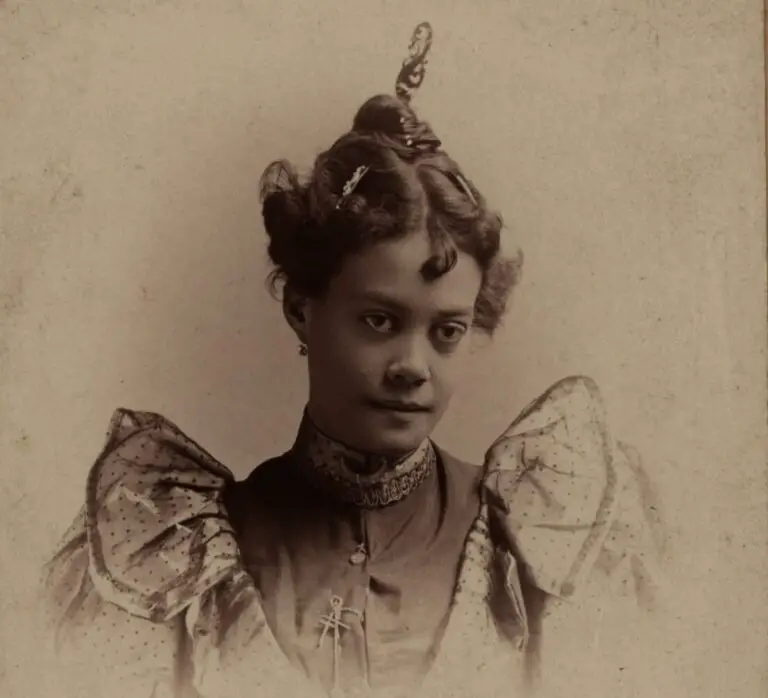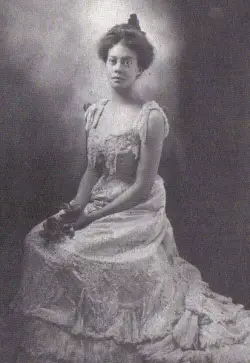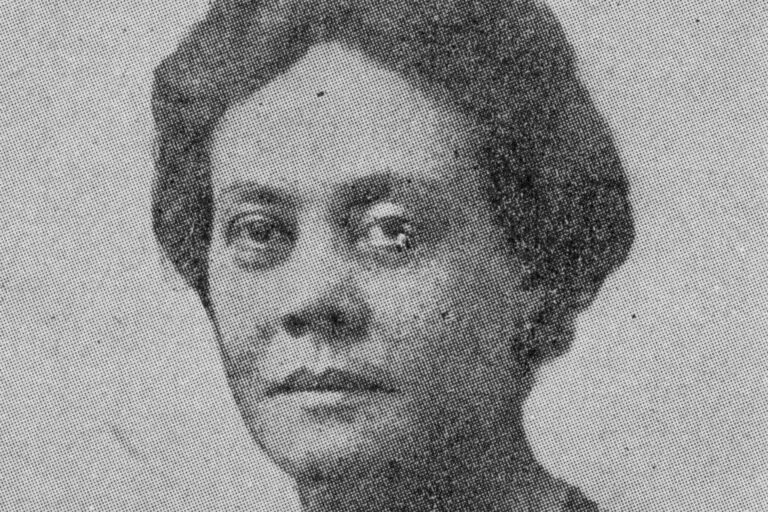In honor of Black History Month, we look at those whose significant contributions in their life that have transformed the way gender and class are looked at today. One of these early pioneers of journalism, poetry, and activism was Alice Ruth Moore Dunbar-Nelson, one of the prominent African Americans involved in the Harlem Renaissance.

Alice Ruth Moore Dunbar-Nelson was born in New Orleans on July 19, 1875, to mixed-race parents. Her parents, Patricia Wright, and Joseph Moore were middle-class and part of the city’s multiracial Creole community. Her African American, Anglo, Native American, and Creole heritage contributed to her understanding of gender, race, and ethnicity, something she often referenced in her work. Her education began at Straight University (later merged into Dillard University) in New Orleans, graduating in 1892. She was named Class Poet by her graduating class.
After graduating, Dunbar-Nelson began teaching in the New Orleans public school system, taught second grade at Marigny School in the Seventh Ward, and became active in teacher organizations. While teaching, she began writing her first works, setting them in New Orleans, as well as poetry.
She began writing for the first newspaper created by and for African American women, The Woman’s Era. Her first book, Violets and Other Tales (1895) was published when she was just 20 by the New Orleans magazine The Monthly Review. Her second collection, The Goodness of St. Rocque and Other Stories (1899) explored her Creole heritage, and the racial oppression she faced. She was highly criticized and rejected by publishers for speaking out about these things.

Her writing and photography caught the eye of Paul Laurence Dunbar, who wrote to her, and the two began talking. Dunbar-Nelson left New Orleans with her mother and relocated to Boston with her sister and brother-in-law. She helped to co-found the White Rose Mission, NYC’s first settlement house for young black women. She met Dunbar one evening, and he proposed that night. They separated in 1902 after he nearly beat her to death and she moved to Wilmington, Delaware where she began teaching at Howard High School and then the State College for Colored Students (now Delaware State College). She continued to publish articles in newspapers, essays, and poetry and married Arthur Callis, founder of the Alpha Phi Alpha fraternity in 1910. They divorced but her career continued on without him.
A Pioneer in Many Genres
According to Gloria T. Hull, editor of the volume Give Us Each Day: The Diary of Alice Dunbar-Nelson (1984), “Dunbar-Nelson perforce wrote in the interstices of a busy existence unsupported (except for one brief period) by any of the money or leisure traditionally associated with people of letters. Doggedly determined to be an author, she plied her trade… carried forward on the flow of words that came quite easily for her.” She was comfortable in many genres but was best known for her prose. She was one of the few female African American diarists of the early twentieth century, portraying the reality of African American women and intellectuals, and addressing topics about sexuality, racism, oppression, work, and family.
Dunbar-Nelson regularly published in Black newspapers such as the Opportunity, Ebony and Topaz, and Crisis magazines between 1917 and 1928. Her poems also appeared in James Weldon Johnson’s seminal anthology, The Book of American Negro Poetry (Harcourt, Brace and Company, 1931). In 1932 she moved to Philadelphia and published in the Journal of Negro History (JNH), also writing columns in the Washington Eagle and Pittsburgh Courier. She was also co-editor and writer for the A.M.E. Review, a church publication, and edited The Dunbar Speaker and Entertainer (1920), as well as co-edited the Wilmington Advocate.

Political Activist
On April 20, 1916, Dunbar-Nelson married journalist, poet, and civil rights activist Robert J. Nelson. Besides being a journalist, poet, and writer, she was heavily involved in politics during her life. In 1914, Dunbar co-founded the Equal Suffrage Study Club, and the following year she was a field organizer for the woman’s suffrage movement in the mid-Atlantic states.
She supported the NAACP and served with the Women’s Commission on the Council of National Defense and the Circle of Negro War Relief during World War I. In 1922, she advocated for the passage of the Dyer Anti-Lynching Bill, created to “protect citizens of the United States against lynching in default of protection by the States,” and helped establish the Industrial School for Colored Girls in Delaware. She served as executive secretary of the American Friends Inter-Racial Peace Committee (1928-1931) and gave many speeches during this time. One of her speeches was published and included in Masterpieces of Negro Eloquence (The Bookery Publishing Company, 1914).
Although she herself isn’t considered a huge part of the Harlem Renaissance, she inspired the work of many famous names of that era and was friends with many including W.E.B. Du Bois and poet Georgia Douglas Johnson. She was a fierce and in-demand speaker, as well as one of the leading poets and journalists of that era. Alice Dunbar-Nelson celebrated freedom and beauty until the end of her life when she died on September 18, 1935, in Philadelphia of heart disease at the age of 60. Her work was so often uncredited, unpaid, or both and she was overshadowed by white men, but she worked hard and deserves to be recognized not only for her pen but also for her fight for women’s and African American rights at a time when it was dangerous to do so.


Comments are closed.